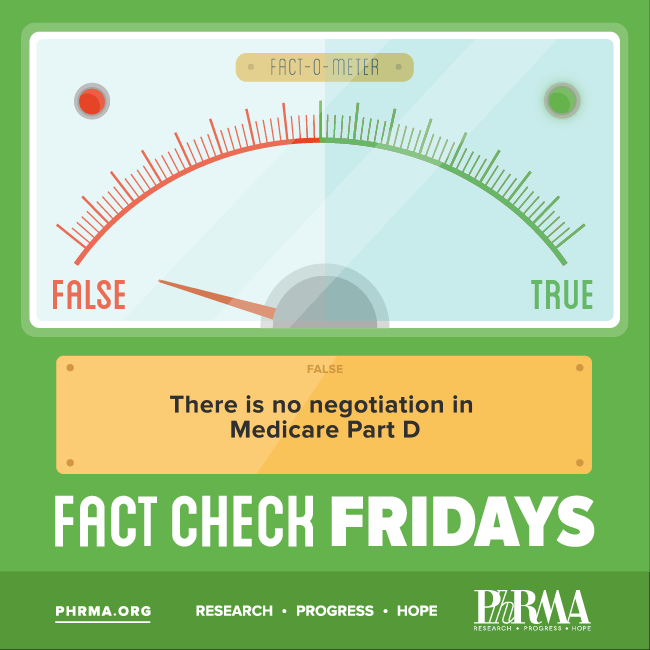This week on Fact Check Friday, we’re talking about something of an urban legend: that there isn’t any negotiation in Medicare Part D.
MYTH:
There is no negotiation in Medicare Part D.
FACT:
Large, powerful Part D purchasers negotiate discounts and rebates directly with manufacturers saving money for both beneficiaries and taxpayers.

Claims that there are no price negotiations currently taking place in Medicare Part D are false. Large powerful purchasers – who may represent as many as 63 million to 125 million covered lives (more than just Part D patients) – negotiate directly with prescription drug manufacturers to secure discounts and rebates under the program.
In fact, Medicare requires that Part D plans provide beneficiaries with access to negotiated prices for covered drugs and the Medicare Trustees report that brand rebates are substantial. According to the Trustees, average rebate levels have exceeded projections and increased each year of the program.
It’s also important to note that the Secretary would not be able to negotiate lower prices than already exist without imposing restrictions on access or coverage of medicines for Part D beneficiaries. According to the Congressional Budget Office (CBO), “The Secretary would be unable to negotiate prices across the broad range of covered Part D drugs that are more favorable than those obtained by (Prescription Drug Plans) under current law.” To do so would hurt seniors and people living with disabilities who rely on Part D for access to needed medicines, including new and innovative treatment options.
The success of Medicare Part D – and the program’s competitive structure that allows for private negotiation and substantial rebates – is evident. Total program costs are 45 percent – or $349 billion – lower than CBO’s initial 10-year projections. Part D continues to offer older Americans and people living with disabilities access to affordable prescription drug coverage, stable average monthly premiums and a program where nearly 90 percent of beneficiaries are satisfied with their coverage.
Check back for more Fact Check Fridays or learn more about Medicare in our Medicare Monday series. You can also subscribe to email updates here. {{cta('38e52880-c743-48dc-a663-8761f8dc2567')}}




